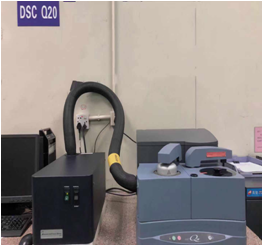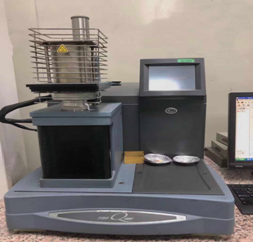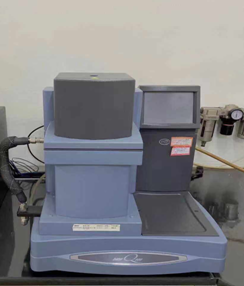Tg testing of copper clad laminates generally uses differential scanning calorimeter method: DSC (DIFferential Scanning Calorimeter Mechanical Analysis),TMA (Thermal Mechanical Analysis) and DMA (Dynamic Mechanical Analysis). This article compares the three Tg test methods, test principles, and their respective advantages and disadvantages; analyzes the influence of the Tg value of the plate on the reliability of the PCB, and the factors that affect the Tg.
Amorphous polymers exist in three mechanical states, vitreous state, highly elastic state and viscous state. Tg (polymer glass transition temperature) is the temperature corresponding to the glass transition and high elasticity transition of the polymer. The level of Tg value is closely related to the performance of the finished PCB. The higher the Tg value, the stability, reliability, heat resistance, and resistance of the finished PCB (referring to the degree of performance retention after soaking of various chemical solutions when the PCB is made) The better it will be, the lower the thermal expansion coefficient will be.
1. PCB Tg Test principle and method
1.1 DSC test method (Figure 1):

Under the program of temperaturecontrol, the transfer temperature of the sample is measured, and the heat flux change during the transfer is measured as a function of time and temperature. During the set heating (or cooling) process, the temperature control system of the instrument keeps the same temperature during the test. When the endothermic (exothermic) reaction of the test object occurs, the side of the test object The temperature detector will detect that the temperature here is lower (higher) than the temperature of the standard object due to the endothermic (exothermic) reaction. Therefore, the heating system on the end of the object to be measured will be extra than the heating system on the standard object side. Multi-input (reduce) some heat (in terms of current or voltage) to increase (decrease) the temperature of the object under test, so that the temperature of the two can be kept the same. In order to keep the two temperatures the same during the test, the additional heat increase or decrease required at the end of the test object is the actual heat change caused by the reaction of the test object during the test. Therefore, DSC can be used for qualitative and quantitative experiments such as reaction or phase change.
1.2: TMA test method (Figure 2):

Apply a constant load to the polymer sample in the heating furnace or environmental chamber, and record the temperature-deformation curves at different temperatures. Similar to the dilatometer method, finding the temperature corresponding to the break point on the curve is the glass transition temperature.
1.3: DMA test method (Figure 3)

Dynamic Mechanical Performance Analysis (DMA): The dynamic mechanical response of polymer materials is obtained by applying a sinusoidal alternating load on the polymer under test. For elastic materials (materials without viscoelastic properties), there is no phase difference between the dynamic load and the deformation caused by it (ε=σ0sin(ωt)/E). When the material has viscoelastic properties, the deformation of the material lags behind the applied load, and a phase difference δ:ε=σ0sin(ωt+δ)/E occurs between the load and the deformation. The stress-strain relationship with the phase angle is expanded according to the trigonometric function relationship, and the storage modulus G′=Ecos (δ) corresponding to the elastic property and the loss modulus G”=Esin (δ) corresponding to the viscoelasticity are defined, E Therefore, it is called absolute modulus E=sqrt(G'^2+G"^2). Due to the existence of the phase angle difference δ, energy loss occurs when the external load loads the viscoelastic material. This property of viscoelastic materials becomes its damping of external forces. The damping coefficient γ=tan(δ)=G’’/G’’, which shows that the viscoelasticity of the polymer is reflected in the phase angle of the strain lag. When the temperature develops from low to high and passes the glass transition temperature, the structural morphology of the polymer inside the material changes, and the viscoelasticity associated with the molecular structural morphology changes accordingly. This change is also reflected in the storage modulus, loss modulus and damping coefficient. The peak value of the damping coefficient corresponds to the change of the internal structure of the material, and the corresponding temperature is the glass transition temperature.
1.4: Test comparison
Speaking from the sample: During DSC test, the prepared sample is small and thin to increase the contact area with the crucible, which is beneficial to the internal heat conduction of the sample. During the DMA test, the surface of the sample should be flat, the material is uniform, and the size is standardized. In the low temperature test, in order to ensure the fit between the fixture and the sample, a re-clamping process of the fixture is required. During the TMA test, the sample is less than 4.5mm and the surface is flat and the material is uniform. The sample preparation is the simplest.
The DMA curve is more obvious than the DSC change details, and can also observe the fine structure of the secondary transformation of the material. Both test methods are controlled by temperature programs such as heating, cooling, and constant temperature. Both belong to thermal analysis technology and can compare △Tg values; but TMA is only applicable to a single Tg value, and the test results are low. We are using TMA to test Tg The results are mostly for reference, not as a theoretical basis. The information obtained by the DSC method is to characterize the thermal properties and composition of the sample, and is the change in thermal properties. Tg reflects the endoplasmic change of the material under the action of heat, and has a guiding significance for the material preparation process.
2. The effect of Tg value on PCB
The △Tg value obtained in the DSC and DMA tests reflects the degree of curing of the sheet resin. The larger the △Tg value, the lower the degree of crosslinking reaction between the polymer molecules and the more polar groups present in the sheet Therefore, the sheet material is very easy to absorb water. The potential defects in this type of pressure plate increase with time. The more the PCB board absorbs water, the hot plate test often occurs when the customer does a thermal shock test, resulting in serious reliability problems. The larger the △Tg value, the larger the hole thickness, copper throwing, and the quality of the plated through hole in the drilling process, because the thermal expansion of the insufficiently cured resin changes greatly, and the hole corner fracture is easy to occur.


